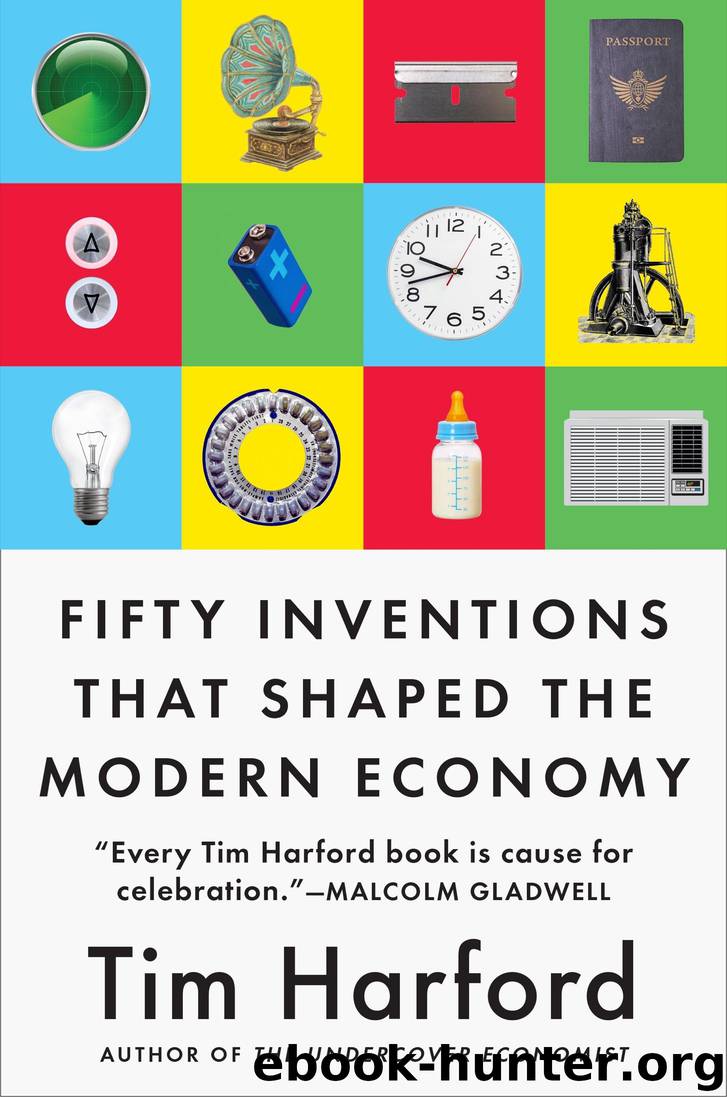Fifty Inventions That Shaped the Modern Economy by Tim Harford

Author:Tim Harford
Language: eng
Format: mobi, epub
Publisher: Penguin Publishing Group
Published: 2017-08-29T00:00:00+00:00
33.
Chemical Fertilizer
It was a marriage of brilliant scientific minds. Clara Immerwahr had just become the first woman in Germany to receive a doctorate in chemistry. That took perseverance. Women couldn’t study at the University of Breslau, so she asked each lecturer, individually, for permission to observe their lessons as a guest. Then she pestered to be allowed to sit the exam. The dean, awarding her doctorate in 1900, said, “Science welcomes each person, irrespective of sex”; he then undermined this noble sentiment by observing that a woman’s duty was family, and he hoped this wasn’t the dawn of a new era.1
Clara Immerwahr saw no reason why getting married should interfere with her career. She was disappointed. Her husband turned out to be more interested in a dinner-party hostess than a professional equal. She gave some lectures but soon became discouraged when she learned that everyone assumed her husband had written them for her. He worked, networked, traveled, and philandered; she was left holding the baby. Reluctantly, resentfully, she let her professional ambitions slide.
We’ll never know what she might have achieved, had attitudes to gender been different in early-twentieth-century Germany. But we can guess what she wouldn’t have done. She would not—as her husband did—have pioneered chemical weapons. To help Germany win World War I, he enthusiastically advocated gassing Allied troops with chlorine. She accused him of barbarity. He accused her of treason. After the first, devastatingly effective use of chlorine gas—at Ypres, in 1915—he was made an army captain. She took his gun and killed herself.2
Clara and Fritz Haber had been married for fourteen years. Eight years into that time, Haber made a breakthrough that some now consider to be the most significant invention of the twentieth century. Without it, close to half the world’s population would not be alive today.3
The Haber-Bosch process uses nitrogen from the air to make ammonia, which can then be used to make fertilizers. Plants need nitrogen: it’s one of their basic requirements, along with potassium, phosphorus, water, and sunlight. In a state of nature, plants grow, they die, the nitrogen they contain returns to the soil, and new plants use it to grow. Agriculture disrupts that cycle: we harvest the plants and eat them.
From the earliest days of agriculture, farmers discovered various ways to prevent yields from declining over time—as it happened, by restoring nitrogen to their fields. Manure has nitrogen. So does compost. The roots of legumes host bacteria that replenish the soil’s nitrogen; that’s why it helps to include peas or beans in crop rotation.4 But these techniques struggle to fully satisfy a plant’s appetite for nitrogen; add more, and the plant grows better.
It was only in the nineteenth century that chemists discovered this—and the irony that 78 percent of the air is nitrogen, but not in a form plants can use. In the air, nitrogen consists of two atoms locked tightly together. Plants need those atoms “fixed,” or compounded with some other element: ammonium oxalate, for example, as found in guano,
Download
Fifty Inventions That Shaped the Modern Economy by Tim Harford.epub
This site does not store any files on its server. We only index and link to content provided by other sites. Please contact the content providers to delete copyright contents if any and email us, we'll remove relevant links or contents immediately.
International Integration of the Brazilian Economy by Elias C. Grivoyannis(74082)
The Radium Girls by Kate Moore(11604)
Turbulence by E. J. Noyes(7690)
Nudge - Improving Decisions about Health, Wealth, and Happiness by Thaler Sunstein(7236)
The Black Swan by Nassim Nicholas Taleb(6754)
Rich Dad Poor Dad by Robert T. Kiyosaki(6169)
Pioneering Portfolio Management by David F. Swensen(6067)
Man-made Catastrophes and Risk Information Concealment by Dmitry Chernov & Didier Sornette(5638)
Zero to One by Peter Thiel(5480)
Secrecy World by Jake Bernstein(4383)
Millionaire: The Philanderer, Gambler, and Duelist Who Invented Modern Finance by Janet Gleeson(4086)
The Age of Surveillance Capitalism by Shoshana Zuboff(3978)
Skin in the Game by Nassim Nicholas Taleb(3963)
The Money Culture by Michael Lewis(3835)
Bullshit Jobs by David Graeber(3821)
Skin in the Game: Hidden Asymmetries in Daily Life by Nassim Nicholas Taleb(3717)
The Dhandho Investor by Mohnish Pabrai(3557)
The Wisdom of Finance by Mihir Desai(3519)
Blockchain Basics by Daniel Drescher(3322)
